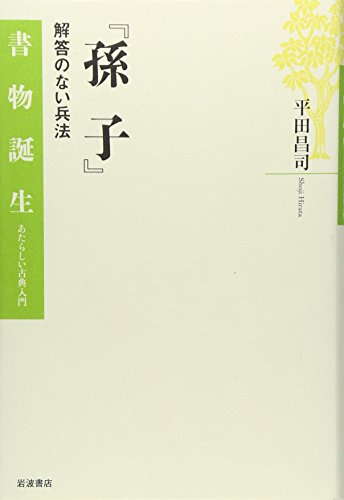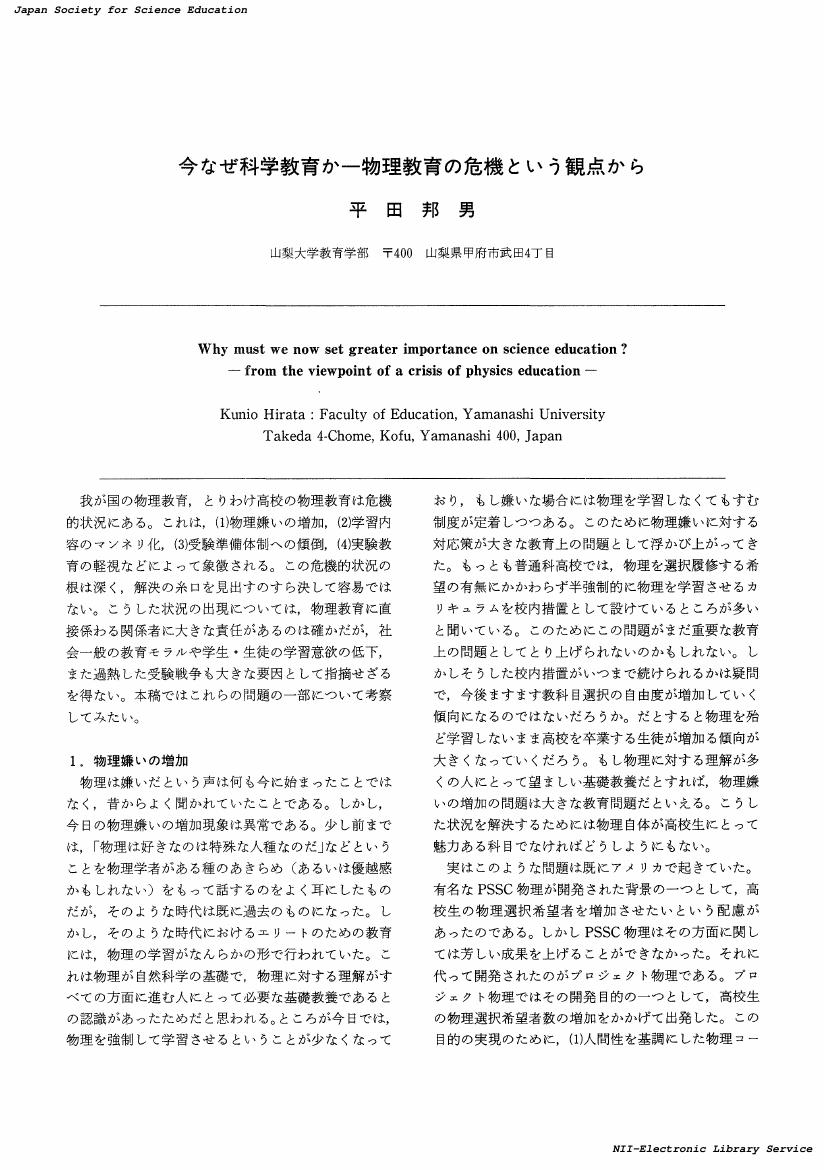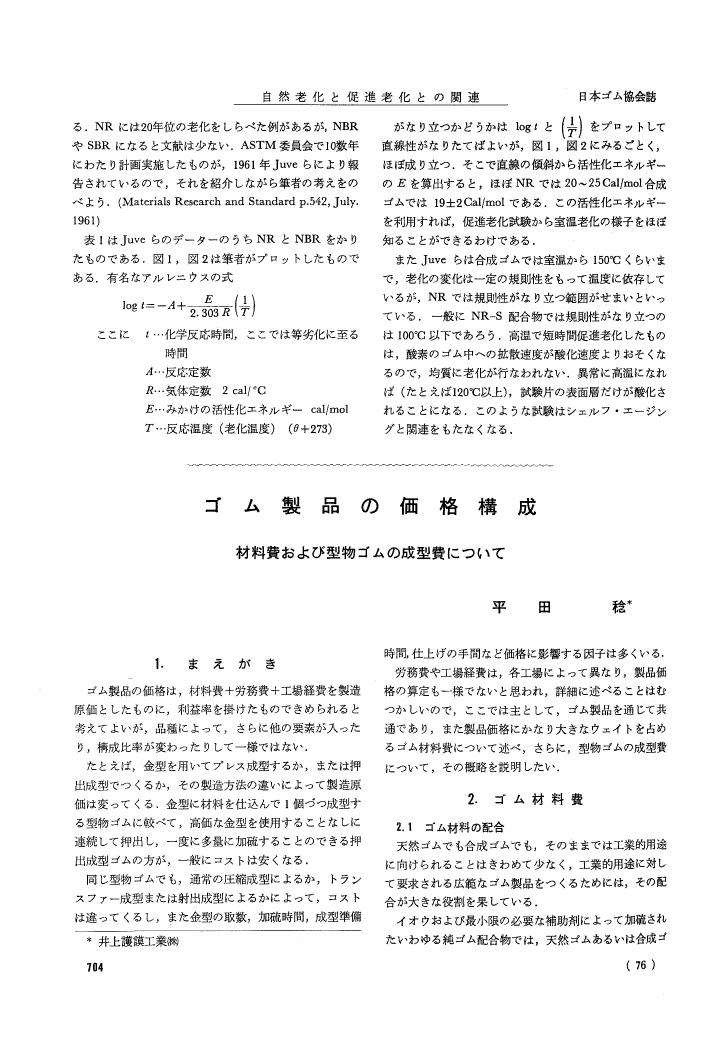1 0 0 0 『孫子』 : 解答のない兵法
1 0 0 0 トイレの文化人類学的考察
- 著者
- 平田 純一
- 出版者
- 空気調和・衛生工学会
- 雑誌
- 空気調和・衛生工学 (ISSN:03864081)
- 巻号頁・発行日
- vol.78, no.8, pp.663-671, 2004-08-05
- 参考文献数
- 29
1 0 0 0 OA 制御教育を考える―体験の必要性と教材開発
- 著者
- 浅井 徹 平田 光男
- 出版者
- 公益社団法人 計測自動制御学会
- 雑誌
- 計測と制御 (ISSN:04534662)
- 巻号頁・発行日
- vol.54, no.3, pp.147-151, 2015-03-10 (Released:2015-05-26)
- 参考文献数
- 10
- 被引用文献数
- 3
- 著者
- 植松 洋子 平田 恵子 飯田 憲司 斉藤 和夫
- 出版者
- Japanese Society for Food Hygiene and Safety
- 雑誌
- 食品衛生学雑誌 (ISSN:00156426)
- 巻号頁・発行日
- vol.41, no.1, pp.23-29_1, 2000-02-25 (Released:2009-12-11)
- 参考文献数
- 13
- 被引用文献数
- 8 8
缶詰食品及びレトルト食品 (共に水産加工食品) 中に缶詰の内面コーティングや包装材から溶出したビスフェノールAジグリシジルエーテル (BADGE), そのダイマー及びトリマー, ビスフェノールFジグリシジルエーテル (BFDGE), 3つの環よりなるノボラックグリシジルエーテル (3-ring NOGE), BADGE・2HCl付加物などのBADGE関連化合物を, 順相のHPLCにより分析した. BADGEは缶詰食品26試料中12試料から, 最高0.9mg/kg検出された. ダイマー及びトリマーを合わせた最高値は15mg/kgに達した. BFDGE及び 3-ring NOGE も4試料から合計で最高6.9mg/kg検出された. また, BADGE・2HCl付加物が2試料から検出された. 更にレトルト食品2試料中1試料からBADGEが1.1mg/kg, そのダイマーが1.2mg/kg検出されたが, これらはプラスチックフィルムやアルミニウム箔を貼り合わせるのに使用した接着剤から溶出したものと考えられる.
1 0 0 0 OA 国立成育医療研究センターにおける肝移植500例の成績
- 著者
- 笠原 群生 内田 孟 佐々木 健吾 平田 義弘 武田 昌寛 上遠野 雅美 久保田 智美 中里 弥生 福田 晃也 阪本 靖介
- 出版者
- 一般社団法人 日本移植学会
- 雑誌
- 移植 (ISSN:05787947)
- 巻号頁・発行日
- vol.53, no.2-3, pp.197-208, 2018 (Released:2018-11-07)
- 参考文献数
- 33
【Purpose】 We reviewed our experience of liver transplantation in the National Center for Child Health and Development and report the results herein.【Subjects and methods】 We have handled 500 cases of liver transplantation from November 2005 through March 2018 in the National Center for Child Health and Development. Variables including indication of liver transplantation and immunological outcome were reviewed.【Results】 There were 469 living donor, 27 deceased and 4 domino liver transplantations in the study period. The indication for liver transplantation was cholestatic liver disease in 48.0%, followed by metabolic liver disease in 22.0% and acute liver failure in 12.6%. The mean age of recipients was 4.0±5.5 years and body weight was 14.9±13.3 kg. Immunosuppression consisted of tacrolimus and low-dose steroids. The incidence of acute cellular rejection was 42.0%. The 10-year patient survival was 90.2%.【Conclusion】 Satisfactory results can be achieved in the liver transplantation program in the National Center for Child Health and Development. Deceased donor liver transplantation, patients with acute liver failure and re-transplantation shows significantly lower patient survival. We conclude that liver transplantation is a safe and effective treatment modality together with proper indication and excellent management strategy. The significant factors affecting survival may be overcome by the technical and immunological refinements that have occurred in recent years.
- 著者
- 香川 靖雄 西沢 正豊 鈴木 実 宮武 正 浜本 敏郎 後藤 公彦 本永 英治 泉川 寛元 平田 晴男 海老原 昭夫
- 出版者
- Center for Academic Publications Japan
- 雑誌
- Journal of Nutritional Science and Vitaminology (ISSN:03014800)
- 巻号頁・発行日
- vol.28, no.4, pp.441-453, 1982 (Released:2009-04-28)
- 参考文献数
- 33
- 被引用文献数
- 164 230
Japanese are unique among the peoples of developed count-ries in having a high intake of eicosapentaenoic acid (C 20:5) from fresh fish and this may in part contribute to their low incidence of cardiovas-cular diseases. Mass spectroscopic analyses of eicosapolyenoic acids (C 20:3, C 20:4 and C 20:5) were carried out on the serum of aged persons living on Kohama island in Okinawa and known to have the lowest incidence of cardiovascular diseases in Japan. All but 4 of the 77 persons examined (73.94±7.81 years old) led active fishing-farming lives. The total amount of eicosapolyenoic acids in the serum of persons on Kohama island (46.77±7.46 mg/ 100 ml) was higher (p<0.001) than that in people on mainland Japan, owing to the higher intake of fresh fish (147.7g/day). A positive correlation (p<0.01) was found between serum C 20: 5 concentration (6.82+2.54 mg/100 ml) and high density lipoprotein concentration (55.38±13.83 mg/100 ml). In addition, there were positive correlations (p<0.01) between serum C 20: 3 concentration (6.58+1.61 mg/100 ml) and total cholesterol (188.60±32.30 mg/ 100 ml), and triglyceride and skinfold thickness. The blood pressure level (p<0.01), incidence of abnormal ECG (p<0.05), and salt intake (6.2-8.3g/ day) estimated from urinalysis, were all lower than the average figures for Japanese of similar ages. No persons examined showed Q-wave on ECG. The percentage of smokers and drinkers were similar for Kohama island and mainland Japan.
1 0 0 0 OA 内因性瞬目研究小史 : 19世紀末から21世紀に向けて
- 著者
- 平田 乃美 本多 麻子 田多 英興
- 雑誌
- 白鴎大学教育学部論集 = Hakuoh Journal of the Faculty of Education (ISSN:18824145)
- 巻号頁・発行日
- vol.5, no.1, pp.115-154, 2011-05-01
1 0 0 0 OA スギ人工林主伐後の植生発達と土砂移動の相互作用
- 著者
- 溝口 拓朗 伊藤 哲 光田 靖 山岸 極 平田 令子
- 出版者
- 森林立地学会
- 雑誌
- 森林立地 (ISSN:03888673)
- 巻号頁・発行日
- vol.60, no.2, pp.63-70, 2018-12-25 (Released:2019-02-02)
- 参考文献数
- 21
人工林主伐後の土砂移動と植生発達の相互作用について,土砂移動を植生回復の抑制要因とみる考え方と,回復した植生を土砂移動の抑制要因とみる考え方の両面からとらえ,これら二つの仮説を検証することにより,スギ人工林皆伐後約1年間の土砂流出と植生回復の関係を明らかにした。100年生スギ人工林伐採後約1年間の土砂移動量,降雨量,植被率を調査した。各計測期間の平均植被率と降雨で基準化した土砂移動量(土砂移動レート)の間には,全測定期間を通して明瞭な関係は見られず,決定木分析でも土砂移動量の大小を明瞭に区分できるような植被率の閾値は検出できなかった。これに対して,各計測期間で標準化した植被率増加速度は,生育期間中は土砂移動量の絶対量が小さいときに大きい値を示す傾向が認められた。決定木分析でも,土砂移動量が22.25(g/m/day)を下回ると,標準化後の植被率増加速度が大きくなることが示された。以上のことから,皆伐直後の植被率が小さく土砂移動量が大きい段階では,土砂移動が植生発達との相互作用を支配する要因になっており,植生によって土砂移動が抑制される効果よりも,土砂移動が植生発達を抑制する効果の方が大きいことが明らかとなった。また,土砂移動および植生発達の空間的な不均一性は林道開設による不安定土砂の生成や林地の枝条残材の影響を受けることが明らかとなった。
1 0 0 0 OA 自閉症児における見本合わせ課題の促進手続き
- 著者
- 平田 真知佳 米山 直樹 M. Hirata Naoki Yoneyama
- 雑誌
- 臨床教育心理学研究
- 巻号頁・発行日
- no.36, pp.41-50, 2010-03-25
- 著者
- 落合 純一 金森 亮 平田 圭二 野田 五十樹
- 出版者
- 一般社団法人 人工知能学会
- 雑誌
- 人工知能学会全国大会論文集 第32回全国大会(2018)
- 巻号頁・発行日
- pp.1B2OS11b03, 2018 (Released:2018-07-30)
本稿では,名古屋市のタクシー配車データに基づき,Smart Access Vehicle Service(SAVS)をシミュレーション評価する.近年,デマンド応答型交通(DRT)は地方だけでなく都市部でも注目されてきているが,数時間前までの予約が必要など,利便性が高い交通サービスとは言えない.一方,SAVSはリアルタイムに提供可能なドア・ツー・ドアの交通サービスであるため,独占型の交通サービスであるタクシーを共有型に変換することが可能である.ODパターンとデマンド数が異なる4つの時間帯を対象にシミュレーションを行った結果,乗り合いによりSAVSはタクシーより効率的に配車できることを確認した.
- 著者
- 落合 純一 金森 亮 平田 圭二 野田 五十樹
- 出版者
- 一般社団法人 人工知能学会
- 雑誌
- 人工知能学会全国大会論文集
- 巻号頁・発行日
- vol.2018, pp.1B2OS11b03, 2018
<p>本稿では,名古屋市のタクシー配車データに基づき,Smart Access Vehicle Service(SAVS)をシミュレーション評価する.近年,デマンド応答型交通(DRT)は地方だけでなく都市部でも注目されてきているが,数時間前までの予約が必要など,利便性が高い交通サービスとは言えない.一方,SAVSはリアルタイムに提供可能なドア・ツー・ドアの交通サービスであるため,独占型の交通サービスであるタクシーを共有型に変換することが可能である.ODパターンとデマンド数が異なる4つの時間帯を対象にシミュレーションを行った結果,乗り合いによりSAVSはタクシーより効率的に配車できることを確認した.</p>
1 0 0 0 OA 音韻象徴における文字の形態・音声の発音と音韻体系の影響
- 著者
- 平田 佐智子
- 出版者
- 日本認知科学会
- 雑誌
- 認知科学 (ISSN:13417924)
- 巻号頁・発行日
- vol.20, no.1, pp.161, 2013 (Released:2014-11-20)
1 0 0 0 OA 音楽家の聴覚野活動の脳磁界解析
- 著者
- 平田 邦男
- 出版者
- 一般社団法人 日本科学教育学会
- 雑誌
- 科学教育研究 (ISSN:03864553)
- 巻号頁・発行日
- vol.11, no.4, pp.143-146, 1987-12-10 (Released:2017-06-30)
- 著者
- 南 雅代 Minami Masayo 中村 俊夫 Nakamura Toshio 平田 和明 Hirata Kazuaki 長岡 朋人 Nagaoka Tomohito 鵜澤 和宏 Hoshino Keigo
- 出版者
- 名古屋大学年代測定資料研究センター
- 雑誌
- 名古屋大学加速器質量分析計業績報告書
- 巻号頁・発行日
- vol.18, pp.134-143, 2007-03
During the past several decades, many medieval skeletons were excavated from archaeological sites in the Yuigahama area, Kamakura, Japan. The excavations yielded more than 5,000 individuals in varying states of preservation from the Zaimokuza, Seiyokan, Yuigahama-minami and Chusei Shudan Bochi sites. Medieval Kamakura was an ancient capital of the Kamakura Shogunate, and a lot of people lived in Kamakura with high population density. The human skeletons excavated from the Zaimokuza site are reported to be humans dead by competition at the end of the Kamakura Shogunate, but a detailed study on dating of the human skeletons has not made yet. In this study, we measured ^<14>C ages, together with carbon and nitrogen isotope ratios, of human skeletal remains excavated from the Yuigahama-minami site and Chusei Shudan Bochi site. The δ^<13>C and δ^<15>N were not different between human skeletal samples of both sites, while the ^<14>C ages were different between them: The human bones of the Yuigahama-minami site are 100 year younger than those of the medieval collective-cemetery site. All of ages of human skeletons from both of the sites are older than the latest Kamakura period. The δ^<13>C and δ^<15>N values of the medieval Kamakura people are higher than those of terrestrial mammals, indicating that they exploited some amount of marine fish and/or mammals with higher δ^<13>C and δ^<15>N as protein sources. Therefore, the ^<14>C ages obtained for human skeletons could be order than the true ages. ^<87>Sr/^<86>Sr isotopic ratios of human skeletons of the Yuigahama-minami site tend to be higher than those of the Chusei Shudan Bochi site. Soils, plants and animals feeding on them in a given locality have ^<87>Sr/^<86>Sr values that generally mirror underlying bedrock composition, and thus ^<87>Sr/^<86>Sr ratios of human skeletons are useful tools for assessing migration in prehistory. The result obtained in this study suggests that Yuigahama-minami humans and Chusei Shudan Bochi humas lived in different areas. More skeleton samples should be analyzed for determining detailed ^<14>C ages of humans excavated from the Yuigahama sites, and for estimating migration of prehistory of the medieval Kamakura humans.
1 0 0 0 OA 運動時の環境温度と飲水量・発汗量及び体温に関する実態調査
- 著者
- 丹羽 健市 中井 誠一 朝山 正巳 平田 耕造 花輪 啓一 井川 正治 平下 政美 管原 正志 伊藤 静夫
- 出版者
- The Japanese Society of Physical Fitness and Sports Medicine
- 雑誌
- 体力科学 (ISSN:0039906X)
- 巻号頁・発行日
- vol.45, no.1, pp.151-158, 1996-02-01 (Released:2010-09-30)
- 参考文献数
- 20
- 被引用文献数
- 1 2
運動時の暑熱障害事故予防のための基礎資料を得るために, 男子大学生を対象に運動場の環境条件 (WBGT) の実態と, それに伴う発汗量や飲水量及び体温との関係ならびに運動時の水分補給の有無が体温調節反応に及ぼす効果について検討した.得られた主な結果は, 次の通りである.1.4月から9月までの期間, 同一時刻に練習を行った際のWBGTは4月以降上昇し, 8月に最高値に達した後下降した.2.自由飲水時の体重減少量は4.8~5.7g/kg・hr-1の範囲にあり, 各月間に有意な差異は認められなかった.3.発汗量および水分補給量はWBGTの上昇に伴って増大し, 両者の問に高い相関関係が認められた.しかし, 自由飲水時の口内温の変化量はWBGTの上昇にもかかわらず0.52±0.08℃であり, WBGTの増加に伴う変動は認められなかった.4.運動時の口内温の上昇は水分補給の有無によって異なり, 水分補給の場合で0.62±0.30℃, 非補給では1.09±0.54℃上昇し, 両者の間に有意な差異が認められた (p<0.001) .5.水分補給の場合の発汗量は10.455±2.272g/kg・hr-1, 一方非補給のそれは8.279±1.271g/kg・hr-1であり, 両者の間に有意な差異が認められた (p<0.01) .
1 0 0 0 OA ゴム製品の価格構成
- 著者
- 平田 稔
- 出版者
- 一般社団法人 日本ゴム協会
- 雑誌
- 日本ゴム協会誌 (ISSN:0029022X)
- 巻号頁・発行日
- vol.37, no.9, pp.704-707, 1964 (Released:2008-04-16)
1 0 0 0 YOSAKOI ソーラン祭りの参加者意識考
- 著者
- 平田 利矢子
- 出版者
- 舞踊学会
- 雑誌
- 舞踊學 (ISSN:09114017)
- 巻号頁・発行日
- vol.1998, no.21, pp.64, 1998
- 著者
- 平田 利矢子
- 出版者
- 東京女子体育大学・東京女子体育短期大学
- 雑誌
- 東京女子体育大学東京女子体育短期大学紀要 (ISSN:18816835)
- 巻号頁・発行日
- no.47, pp.85-94, 2012




